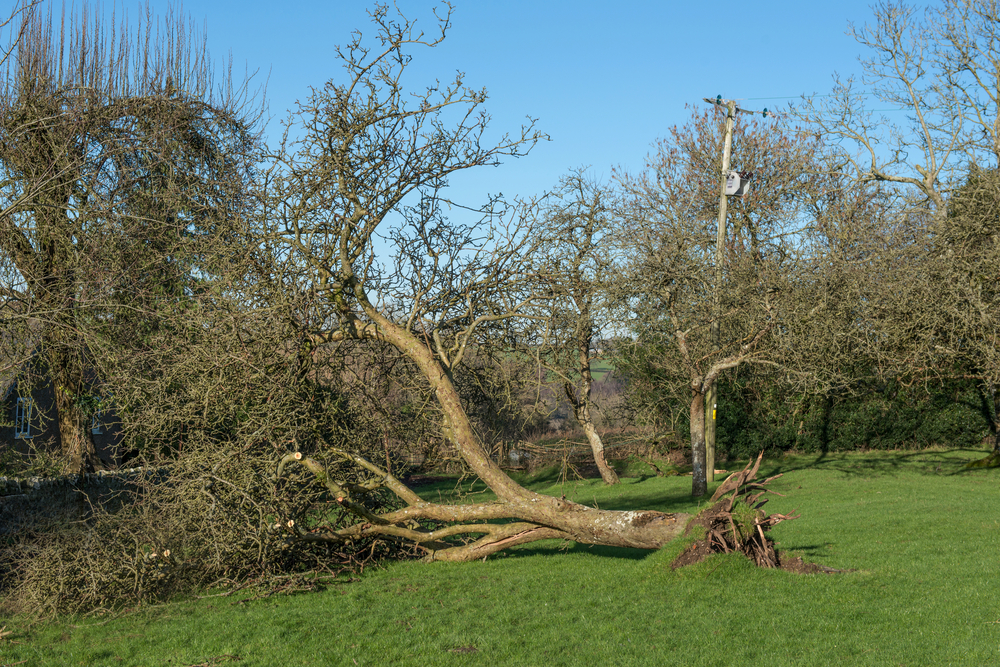Summer brings long, hot days and a bounty of fresh produce. But the summer season also brings strong winds with it. Plants are left vulnerable to wind damage when they aren’t propped up properly. In order to protect your garden against strong winds, you have to know how to properly stake a plant.
Strong winds can cause serious damage if they reach your garden unnoticed. Trimming plants so that they are visible from above and air can pass through will help keep stronger gusts of wind at bay. Here is everything you need to know about protecting your garden against strong winds.
How to stake a plant
It’s important to stake or anchor plants that are likely to be blown around, particularly those with strong stem-like roses and climbing herbs. You can use stakes of different materials, but avoid metal since it conducts electricity and is a risk to nearby plants as well. Instead, use lightweight plastic stakes, or stakes made of wood or bamboo.
You can stake a plant directly into the ground, or you can use a trellis or lattice to suspend the plant so that it’s higher off the ground. A trellis will protect the plant from wind, while allowing air to circulate through the stems, making your plant healthier. A trellis can be made from wood, PVC pipe, or even from netting.


Dig a trench for anchoring
Anchor your plants to the ground with stakes. A trench is the best way to do this as it makes it easier to dig in hard, dry soil. Dig a trench at least 30cm (1ft) wide and at least 30cm (1ft) deep. Anchor the stake into the trench. If the soil is soft, you can also use a post buried in the trench as a mounting point.
Use an arched trellis to protect
If you have a trellis in your garden, you can use it as a wind barrier. This works especially well if you have a wall or other structure to use as a trellis. Tie your branches to the trellis with strong twine. Alternatively, you can use an arched trellis made of wood or metal.
This will let wind pass through its structure while protecting the plants underneath. An arched trellis can be made of any material that is sturdy and able to support the weight of the plants. It should be at least 2.5m (8ft) above the ground and have a distance of at least 3.5cm (1.5in) between the trellis and both sides of the wall.


Create a wind wall for extra protection
A wind wall is a barrier made of sand or soil that creates an extra windbreak. This is a good way to create extra protection against strong winds. It looks best if it’s built against a concrete wall or other strong structure. Since this wall is made of sand, it won’t present a hazard to your plants. The wall should be at least 2.5m (8ft) high and 1m (3ft) thick.
Make sure that the wall isn’t in the path of any nearby structures or power lines. Gently smooth the surface of the sand wall so that it won’t crumble when walked on, but isn’t too compacted. Add extra protection by planting low-growing flowers or shrubs near the base of the wall that can help shield your plants from wind.
Plant wind chimes for extra protection
You can combine wind chimes with one of the other methods to create an even more effective wind barrier. Plant wind chimes are a popular way to create an additional wind barrier. Wind chimes are made of metal and can be either handheld or mounted on a wall.
They create a soothing sound that interferes with the noise of the wind, providing extra protection against strong gusts. Wind chimes come in a variety of shapes, sizes, and styles. You can also purchase custom wind chimes made in a shape that you like, or create your own wind chime by combining several shapes that have similar pitches.


Don’t forget the lawn stakes
Lawn stakes can be used to help prop up plants that are likely to be blown over, such as tomatoes and beans. These are usually 8mm or 10mm diameter stakes that can be bought from most garden stores. Lawn stakes can also come in handy for holding up other plants that aren’t particularly prone to wind damage, such as flowers and shrubs. Large stakes made of metal, wood, or concrete provide extra protection for your garden against the wind.
Conclusion
Gardeners and landscapers spend a lot of time and energy protecting their plants from strong winds, whether that means building wind walls, using wind chimes, or digging wind trenches. But you don’t need to go to these lengths to protect your garden.
You can still protect your plants from strong winds by choosing a planting spot that is elevated above the ground and well-visible. With these tips in mind, you can stay one step ahead of the wind and protect your plants from damage.




Leave feedback about this